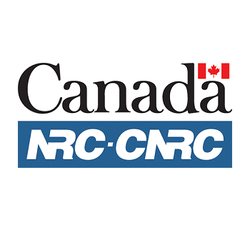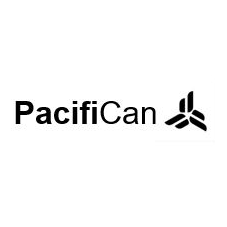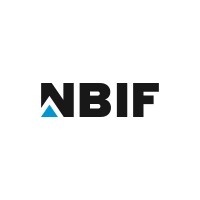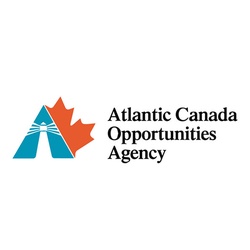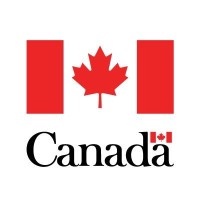Green Manufacturing & Decarbonization Grants: Funding for Cleaner Industry in Canada
Reducing greenhouse gas emissions from industry is crucial for Canada to meet its climate targets – and it’s also a huge opportunity to modernize manufacturing and heavy sectors. Industries like steel, cement, chemicals, mining, and oil & gas are among the largest emitters, but they are also the backbone of Canada’s economy.
The challenge for company leaders is clear: how to cut emissions and improve energy efficiency without undermining productivity. Fortunately, governments are stepping up with substantial grants and incentives for green manufacturing and industrial decarbonization. Across Canada, billions of dollars are available to help companies adopt clean technologies, electrify operations, capture carbon (CCUS), and upgrade equipment for greater efficiency.
By tapping into these programs, industrial businesses can offset major project costs, transforming sustainability initiatives from expenses into strategic investments.
Federal Programs Driving Industrial Decarbonization
Strategic Innovation Fund – Net Zero Accelerator
The Net Zero Accelerator (NZA) is Canada’s flagship funding stream under the Strategic Innovation Fund (SIF), with up to $8 billion to support large-scale industrial decarbonization. It co-funds transformative projects that drastically reduce emissions — such as electric arc furnaces in steel plants, EV battery manufacturing, and low-carbon fuel facilities.
Projects typically receive 30–50 % of eligible costs through repayable or non-repayable contributions. The focus: deep emissions cuts, technology innovation, and job creation. For large manufacturers, this is the most significant federal tool to finance green manufacturing transformation.
Green Industrial Facilities and Manufacturing Program (GIFMP)
Natural Resources Canada’s GIFMP funds medium-sized projects focused on energy efficiency and emission reductions. Companies can receive up to 50 % of eligible costs (to a maximum of $10 million) for installing clean or electric boilers, heat recovery systems, process electrification, or digital controls that reduce energy consumption.
For example, a $2 million retrofit to replace gas boilers with electric heat pumps could receive $1 million in funding. GIFMP directly supports industrial decarbonization projects that are technically ready and deliver measurable reductions.
Low Carbon Economy Fund (LCEF)
The Low Carbon Economy Fund targets practical, high-impact projects that lower greenhouse gases across sectors. Through its Challenge stream, it co-funds 25–33 % of project costs for emission-reduction initiatives, from fuel switching to process optimization.
Manufacturers that can quantify carbon savings and deliver quick implementation are strong candidates. When combined with provincial grants or clean-tech tax credits, LCEF contributions can make ambitious retrofits financially feasible.
Sustainable Development Technology Canada (SDTC)
SDTC supports companies developing or demonstrating innovative clean technology solutions, including industrial decarbonization tools. Grants typically cover 33 % of total project costs, helping firms test new low-carbon materials, automation systems, or carbon capture processes.
Industrial companies can partner with tech providers to pilot solutions at their facilities. A successful SDTC demonstration can later unlock larger funding from SIF or provincial programs.
Industrial Research Assistance Program (IRAP)
For small and medium-sized industrial firms, IRAP helps fund the R&D work that precedes deployment. It covers 40–80 % of labour and contractor costs for clean technology research, process redesign, or equipment prototyping.
An SME developing energy-saving manufacturing technology, for example, can use IRAP to refine the innovation before applying to SDTC or GIFMP for full-scale adoption funding.
Clean Technology Investment Tax Credits
Canada’s new clean technology investment tax credits directly reduce capital costs for industrial decarbonization:
Clean Tech ITC (30 %) – for renewable energy and storage systems.
Clean Hydrogen ITC (15–40 %) – for hydrogen production and infrastructure.
CCUS ITC (up to 50 %) – for carbon capture and storage equipment.
These credits are refundable, meaning companies receive cash back even without tax payable. Combined with grants, they make major industrial decarbonization projects more cost-effective.
Provincial and Sector-Specific Funding Opportunities
Emissions Reduction Alberta (ERA)
Alberta’s ERA funds up to 50 % of project costs for technologies that cut emissions in oil & gas, mining, petrochemicals, and manufacturing. Funded projects include low-emission fuels, carbon capture pilots, and industrial energy optimization.
ERA challenges run periodically, making it essential for companies to prepare shovel-ready proposals. The program’s competitive nature drives innovation and rewards measurable GHG reductions.
CleanBC Industry Fund (British Columbia)
B.C.’s CleanBC Industry Fund reinvests carbon tax revenues into emission-reduction projects for regulated industries. Grants typically cover 30–50 % of eligible costs for initiatives like electrification, fuel switching, and heat recovery.
Industrial participants also benefit from CleanBC Go Electric programs that support electrified equipment and vehicles for operations, further lowering industrial emissions.
Quebec’s ÉcoPerformance Program
Quebec offers some of Canada’s most established industrial energy programs. The ÉcoPerformance initiative funds efficiency retrofits, fuel switching, and process improvements.
Grants are performance-based — companies receive funding proportional to GHG reductions achieved. Manufacturers that electrify heating, capture waste heat, or integrate biomass often qualify for significant cost-sharing.
Hydro-Québec complements this with low-cost clean electricity, allowing Quebec industries to cut both emissions and long-term energy costs.
Ontario and Other Regional Programs
Ontario industries can leverage Save on Energy incentives for facility retrofits and Invest Ontario co-funding for large clean manufacturing projects.
Other regions — such as Saskatchewan, Manitoba, and Atlantic Canada — deliver support through provincial climate funds, Efficiency Manitoba, and regional development agencies like FedNor or ACOA.
These programs frequently align with federal objectives, allowing companies to stack provincial grants with federal funding for deeper cost relief.
Funding Opportunities by Technology Area
Energy Efficiency and Electrification
Manufacturers can upgrade equipment, lighting, motors, and control systems to reduce power use and emissions. Programs like GIFMP, provincial energy efficiency funds, and utility rebates (e.g., BC Hydro, Enbridge, Save on Energy) can collectively cover 30–60 % of project costs.
Carbon Capture, Utilization & Storage (CCUS)
Industrial emitters can apply for CCUS tax credits (up to 50 %) and partner with SDTC or provincial agencies for pilot or commercial-scale carbon capture projects. CCUS funding is ideal for refineries, cement plants, or chemical producers targeting deep emission cuts.
Low-Carbon Fuels and Hydrogen
The Clean Fuels Fund offers grants for production and adoption of biofuels, renewable natural gas, and hydrogen. Manufacturing plants that switch boilers or vehicles to cleaner fuels can also access provincial top-ups and hydrogen-specific tax incentives.
Waste Heat Recovery and Process Innovation
Programs like ERA, GIFMP, and CleanBC support technologies that reuse waste heat, optimize process flows, or implement circular economy solutions. Funding can reach up to 50 %, depending on energy savings and emissions avoided.
How to Maximize Funding Success
Align with Policy Goals
Each grant program prioritizes specific outcomes — GHG reduction, innovation, competitiveness. Frame your project to clearly meet these goals with quantifiable results, such as tonnes of CO₂ reduced or jobs maintained.
Combine Multiple Funding Sources
Stacking grants, rebates, and tax credits can dramatically reduce net costs. For instance, a manufacturer could use GIFMP for a 50 % contribution and claim the 30 % Clean Tech ITC on the remainder — effectively reducing project expenses by over two-thirds.
Prepare Data-Driven Proposals
Strong applications include energy audits, cost-benefit analyses, and verified emission baselines. Use engineering or sustainability consultants to provide credible numbers — reviewers prioritize measurable impact.
Build Partnerships
Collaborating with technology suppliers, research institutions, or industry groups strengthens proposals and improves funding chances. Multi-partner projects also help spread costs and risks.
Maintain Reporting Discipline
Most grants require periodic progress and emissions reports. Set up systems for data tracking and compliance early. Demonstrating accountability builds credibility for future applications.
Why Green Manufacturing Grants Matter
The industrial sector accounts for roughly a third of Canada’s emissions, but it also holds the most potential for impactful, scalable reductions. Federal and provincial governments are committed to accelerating this shift, providing unprecedented financial support for low-carbon manufacturing and clean industrial technology.
For companies, participating in these programs delivers far more than funding. It drives operational modernization, resilience against future carbon costs, and long-term savings.
By leveraging Canada’s growing ecosystem of green manufacturing grants and decarbonization incentives, businesses can transform compliance pressure into a growth opportunity — leading the charge toward a cleaner, more competitive industrial future.





